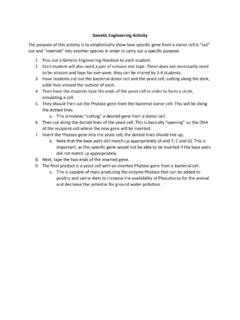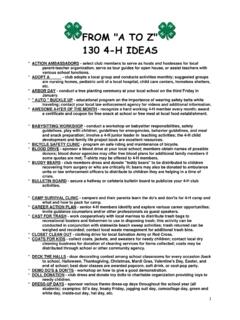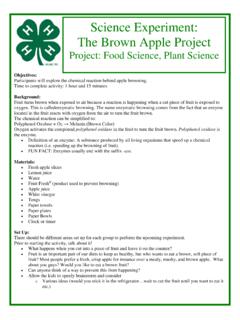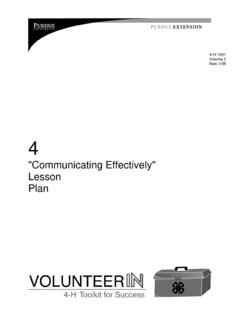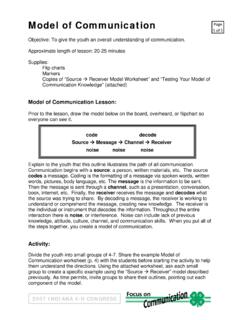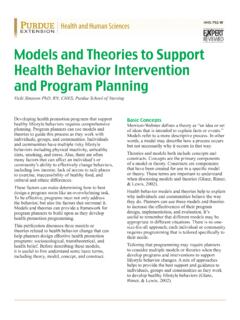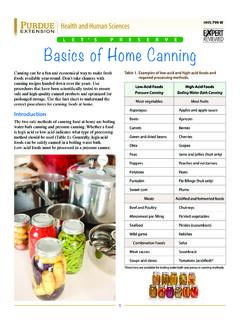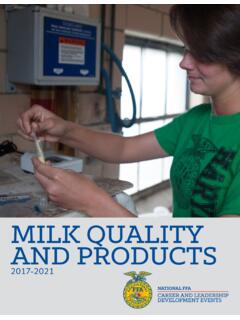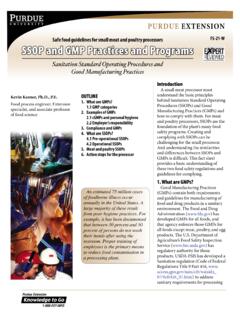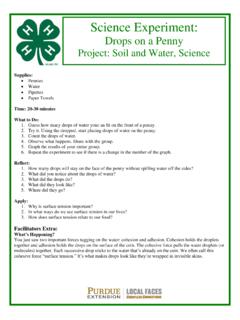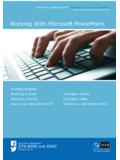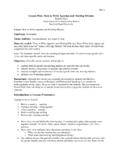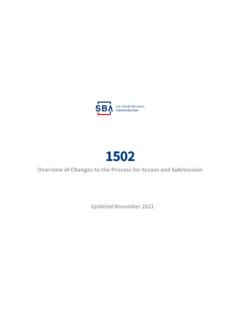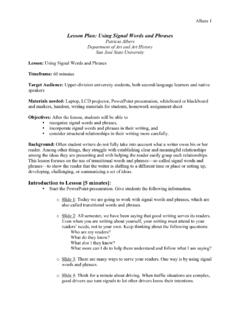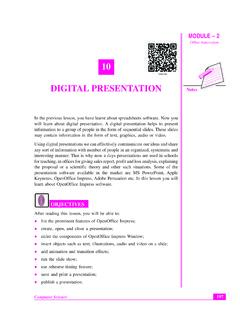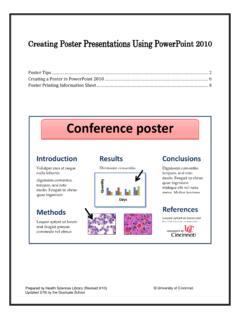Transcription of Experiential Learning Lesson Plan
1 4-H-1001 Volume 2 New 1/08 1 " Experiential Learning " Lesson Plan 2 Learning Objectives 1. Recognize the five steps of the Experiential Learning Model. 2. Experience the model. 3. Describe how Experiential Learning applies to positive youth development. Supplies & Resources Needed Lesson plan with instructional objectives Notes pages of powerpoint presentation with talking points LCD projector and laptop with powerpoint presentation loaded Copies of powerpoint slides printed as a three- slides /page handout for each participant Copies of Lesson plan quiz for each participant Pencils or pens for volunteers to take notes and complete the quiz Copies of Experiential Learning fact sheet Straws and coffee stirrers for the activity References Diem, K.
2 G. (2001) Learn by Doing the 4-H Way. New Brunswick, NJ. Rutgers Cooperative Extension. Koch, K. (2006) Experiential Learning Model slide show . Noblesville, IN. Purdue Cooperative Extension. Projected Length 20-25 minutes Instructor Notes If you will be using the powerpoint presentation to share this Lesson with the volunteers, set up the laptop and LCD projector prior to the start of the program and test the equipment to be sure it is working properly. Welcome the group and thank them for their participation. Begin the Experiential Learning powerpoint presentation.
3 Utilize the talking points found on the notes pages of the powerpoint presentation to guide you during the presentation. Review the purpose and objectives for this Lesson plan. Provide a brief introduction of the Lesson , including its importance to the 4-H Youth Development Program. Proceed with the lecture portion of the Lesson . Distribute the " Experiential Learning fact sheet to each participant. Conclude the Lesson with a time for questions from the participants. 3 Methods/Content Information found on slides #1-2. Introduction As part of the Mastery Concept of the Essential Elements of 4-H, Experiential Learning is the educational basis for all 4-H projects.
4 When youth learn by doing they experiment, use trial and error, analyze what s happening, and draw conclusions. They learn lessons through experience. This Lesson is designed to help you learn about the steps of the Experiential Learning Model and help you, as volunteers, lead youth in discussions that will help them learn lessons and benefit from the model. The three objectives of this Lesson are: 1. Recognize the five steps of the Experiential Learning Model. 2. Experience the model. 3. Describe how Experiential Learning applies to positive youth development.
5 Objective 1 Recognize the five steps of the Experiential Learning Model. Information found on Slide #3. Often referred to as Learning by Doing Learner experiences a problem or activity and makes sense of the solution on his or her own (with minimal assistance from the adult helper) Model is divided into five steps, and summarized into three main processes In this model, the learner has the experience with minimal assistance from the adult helper. So what exactly is the Experiential Learning Model? Quite often we experience some form of this Learning when we are confronted with doing something new or different, whether we realize it or not.
6 4 Information found on Slide #4. The Experiential Learning Model includes five steps: Experience, Share, Process, Generalize, and Apply. Let s take a look at each of these steps in more detail. Information found on Slide #5. Experience Engage in an activity that: o Is likely unfamiliar to the participant o Is possibly uncomfortable, pushes personal limits o Offers minimal instruction- let the participants figure something out before being told how to do it The first step of the Experiential Learning Model is Experience.
7 The learner must engage in an activity to learn from it. Quite often the learner has never done this activity, or is doing it in a new or different way. An example of this might be making a repair or solving a problem you have never encountered, trying a new recipe, or creating a project out of materials with which you have never worked. Instead of giving the learner a step-by-step plan, the adult helper allows the person to try different methods to reach the desired results. Information found on Slide #6. Share (What happened?) Participants should talk about what they experienced while doing the activity.
8 O Reactions o Observations o Feelings Encourage discussion and expression of ideas and feelings. o The leader should have some questions ready to aid the discussion or should bring up major points. At the Share step, the discussion should focus on what happened with the activity at hand. Questions that you might ask include, How did you do what you did? Did you achieve the desired result? What happened? At this step, it is important for the youth to express their experience in doing the activity. If the group is not willing to share their experiences, it will be helpful for the leader to have some questions on hand that will prompt the youth to share.
9 5 Information found on Slide #7. Process (What's important?) Analyze and reflect on what happened. Discuss how problems and issues were brought out through the experience. Discuss how these problems and issues were addressed. Discuss personal experiences of participants. Look for recurring themes. To process our experience, we try to find what was important in what happened. At this point, we reflect on what happened, why it happened, and if the end result was the desired result. We begin to put some pieces together. Is there a relationship between what was done and what happened?
10 Were our actions modified throughout the experience so we could achieve the desired result? How were issues or problems addressed? At this point we might ask participants to share their experiences in carrying out the activity and tell the rest of the group about their successes and failures. For some activities, we might ask if the participants would have learned as much by reading or hearing about something as opposed to actually experiencing it. Information found on Slide #8. Generalize (So what?) Find trends or common truths in the experience. Relate the experience to "real life.
